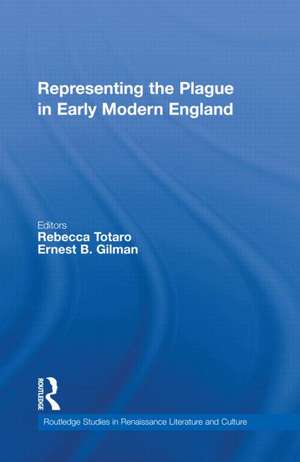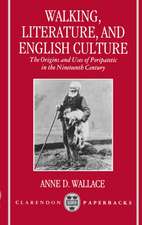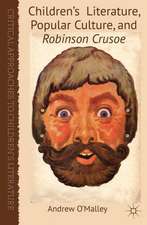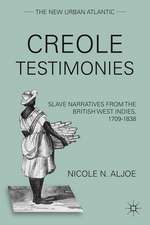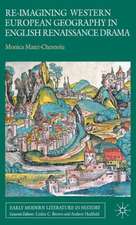Representing the Plague in Early Modern England: Routledge Studies in Renaissance Literature and Culture
Editat de Rebecca Totaro, Ernest B. Gilmanen Limba Engleză Hardback – 25 iun 2010
| Toate formatele și edițiile | Preț | Express |
|---|---|---|
| Paperback (1) | 451.41 lei 6-8 săpt. | |
| Taylor & Francis – 20 apr 2012 | 451.41 lei 6-8 săpt. | |
| Hardback (1) | 1050.09 lei 6-8 săpt. | |
| Taylor & Francis – 25 iun 2010 | 1050.09 lei 6-8 săpt. |
Din seria Routledge Studies in Renaissance Literature and Culture
-
 Preț: 326.26 lei
Preț: 326.26 lei -
 Preț: 714.58 lei
Preț: 714.58 lei -
 Preț: 310.09 lei
Preț: 310.09 lei -
 Preț: 485.40 lei
Preț: 485.40 lei -
 Preț: 339.89 lei
Preț: 339.89 lei -
 Preț: 446.95 lei
Preț: 446.95 lei - 18%
 Preț: 1053.95 lei
Preț: 1053.95 lei -
 Preț: 443.65 lei
Preț: 443.65 lei - 18%
 Preț: 1001.90 lei
Preț: 1001.90 lei - 18%
 Preț: 1110.77 lei
Preț: 1110.77 lei -
 Preț: 278.46 lei
Preț: 278.46 lei - 18%
 Preț: 1109.21 lei
Preț: 1109.21 lei - 18%
 Preț: 1053.16 lei
Preț: 1053.16 lei -
 Preț: 389.38 lei
Preț: 389.38 lei - 31%
 Preț: 763.81 lei
Preț: 763.81 lei -
 Preț: 440.97 lei
Preț: 440.97 lei - 26%
 Preț: 764.62 lei
Preț: 764.62 lei - 13%
 Preț: 321.08 lei
Preț: 321.08 lei - 26%
 Preț: 765.01 lei
Preț: 765.01 lei -
 Preț: 433.26 lei
Preț: 433.26 lei - 18%
 Preț: 1062.26 lei
Preț: 1062.26 lei - 18%
 Preț: 1111.40 lei
Preț: 1111.40 lei - 18%
 Preț: 1105.24 lei
Preț: 1105.24 lei - 18%
 Preț: 1057.13 lei
Preț: 1057.13 lei - 18%
 Preț: 1061.22 lei
Preț: 1061.22 lei - 18%
 Preț: 1138.65 lei
Preț: 1138.65 lei -
 Preț: 387.49 lei
Preț: 387.49 lei - 18%
 Preț: 1053.92 lei
Preț: 1053.92 lei -
 Preț: 487.19 lei
Preț: 487.19 lei - 26%
 Preț: 762.57 lei
Preț: 762.57 lei -
 Preț: 416.22 lei
Preț: 416.22 lei - 18%
 Preț: 1111.55 lei
Preț: 1111.55 lei - 18%
 Preț: 1040.35 lei
Preț: 1040.35 lei - 18%
 Preț: 1000.27 lei
Preț: 1000.27 lei - 30%
 Preț: 847.73 lei
Preț: 847.73 lei - 30%
 Preț: 851.75 lei
Preț: 851.75 lei - 18%
 Preț: 1055.51 lei
Preț: 1055.51 lei - 26%
 Preț: 765.77 lei
Preț: 765.77 lei
Preț: 1050.09 lei
Preț vechi: 1280.60 lei
-18% Nou
Puncte Express: 1575
Preț estimativ în valută:
200.96€ • 209.03$ • 165.90£
200.96€ • 209.03$ • 165.90£
Carte tipărită la comandă
Livrare economică 14-28 aprilie
Preluare comenzi: 021 569.72.76
Specificații
ISBN-13: 9780415877978
ISBN-10: 0415877970
Pagini: 268
Ilustrații: 2 halftones
Dimensiuni: 152 x 229 x 20 mm
Greutate: 0.32 kg
Ediția:1
Editura: Taylor & Francis
Colecția Routledge
Seria Routledge Studies in Renaissance Literature and Culture
Locul publicării:Oxford, United Kingdom
ISBN-10: 0415877970
Pagini: 268
Ilustrații: 2 halftones
Dimensiuni: 152 x 229 x 20 mm
Greutate: 0.32 kg
Ediția:1
Editura: Taylor & Francis
Colecția Routledge
Seria Routledge Studies in Renaissance Literature and Culture
Locul publicării:Oxford, United Kingdom
Public țintă
Postgraduate and UndergraduateCuprins
Acknowledgments Introduction, Rebecca Totaro Section One: Making the Plague Serve Form and Function, 1563-1666 1: Writing the Plague in English Prose Satire, William Kerwin 2: Plague Space and Played Space in Urban Drama, 1604, Kelly J. Stage 3: Physical and Spiritual Illness: Narrative Appropriations of the Bills of Mortality, Erin Sullivan Section Two: Governing Bodies in Plague-Time 4: Contagious Figurations: Plague and the Impenetrable Nation after the Death of Elizabeth, Richelle Munkhoff 5: "Thinking to pass unknown": Measure for Measure, the Plague, and the Accession of James I, James D. Mardock Section Three: Performances, Playhouses, and the Sites of Re-Creation 6: "Sweet recreation barred": The Case for Playgoing in Plague-time, Nichole DeWall 7: Shakespeare’s Dual Lexicons of Plague: Infections in Speech and Space, Paula S. Berggren 8: "A plague on both your houses": Sites of Comfort and Terror in Early Modern Drama, Barbara H. Traister Section Four: Contemporary Turns 9: Plague in A Midsummer Night’s Dream: A Girardian Reading of Bottom and Hippolyta, Matthew Thiele 10: Dekker’s and Middleton’s Plague Pamphlets as Environmental Literature, Charles Whitney Afterword: Plague and Metaphor, Ernest B. Gilman Notes on Contributors Index
Recenzii
"This is an extraordinary collection, filled with many strong and engaging arguments, readable and broad in its treatment of literary works and perspectives." --Catherine I. Cox, Texas A&M University - Corpus Christi, Renaissance Quarterly, Summer 2011
"Highly recommended." --M. Cole, Edison State College, Choice, January 2011
'This is an extraordinary collection, filled with many strong and engaging arguments, readable and broad in its treatment of literary works and perspectives.' - Catherine I. Cox, Texas A&M University - Corpus Christi, Renaissance Quarterly, Summer 2011
'Highly recommended.' - M. Cole, Edison State College, Choice, January 2011
'The essays in this collection make significant strides towards mappin the diversity of literary responses to plague epidemics, and offer valuable insights into the ways in which earlier cultures dealt with collective experiences.' - Darryl Chalk, University of Southern Queensland
"Highly recommended." --M. Cole, Edison State College, Choice, January 2011
'This is an extraordinary collection, filled with many strong and engaging arguments, readable and broad in its treatment of literary works and perspectives.' - Catherine I. Cox, Texas A&M University - Corpus Christi, Renaissance Quarterly, Summer 2011
'Highly recommended.' - M. Cole, Edison State College, Choice, January 2011
'The essays in this collection make significant strides towards mappin the diversity of literary responses to plague epidemics, and offer valuable insights into the ways in which earlier cultures dealt with collective experiences.' - Darryl Chalk, University of Southern Queensland
Descriere
This collection offers readers a timely encounter with the historical experience of people adapting to a pandemic emergency and the corresponding narrative representation of that crisis, as early modern writers transformed the plague into literature. The essays examine the impact of the plague on health, politics, and religion as well as on the plays, prose fiction, and plague bills that stand as witnesses to the experience of a society devastated by contagious disease. Readers will find physicians and moralists wrestling with the mysteries of the disease; erotic escapades staged in plague-time plays; the poignant prose works of William Bullein and Thomas Dekker; the bodies of monarchs who sought to protect themselves from plague; the chameleon-like nature of the plague as literal disease and as metaphor; and future strains of plague, literary and otherwise, which we may face in the globally-minded, technology-dependent, and ecologically-awakened twenty-first century. The bubonic plague compelled change in all aspects of lived experience in Early Modern England, but at the same time, it opened space for writers to explore new ideas and new literary forms -- not all of them somber or horrifying and some of them downright hilarious. By representing the plague for their audiences, these writers made an epidemic calamity intelligible: for them, the dreaded disease could signify despair but also hope, bewilderment but also a divine plan, quarantine but also liberty, death but also new life.
